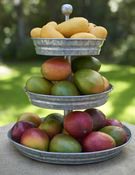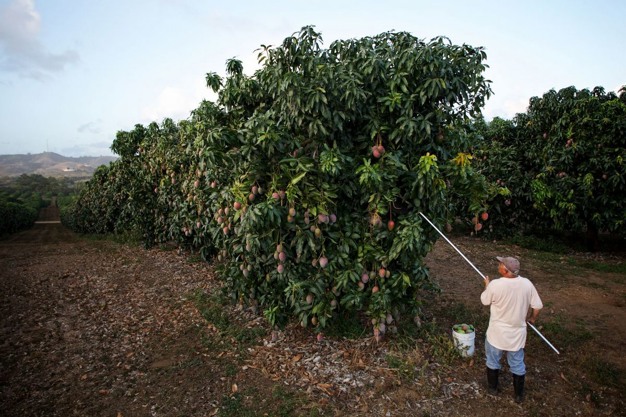 Supply shortages in the mango market continue as both Ecuador and Peru are faced with the consequences of El Niño. Ecuador’s mango season is finishing up and while Peru started harvest a while back, it feels the country is still trying to get itself going. “Year to date, Peru has shipped about 18 – 20 percent of what they were supposed to ship,” says Albert Perez with Continental Fresh. For months, there have been talks about Peru and Ecuador being impacted by El Niño and the expectation was for supply to be down 60 to 70 percent. “That would have been a significant drop, but we didn’t know it would be this drastic,” he added.
Supply shortages in the mango market continue as both Ecuador and Peru are faced with the consequences of El Niño. Ecuador’s mango season is finishing up and while Peru started harvest a while back, it feels the country is still trying to get itself going. “Year to date, Peru has shipped about 18 – 20 percent of what they were supposed to ship,” says Albert Perez with Continental Fresh. For months, there have been talks about Peru and Ecuador being impacted by El Niño and the expectation was for supply to be down 60 to 70 percent. “That would have been a significant drop, but we didn’t know it would be this drastic,” he added.
High prices
“We, growers and shippers, are struggling to cover contracts due to the tremendous shortage in the market,” commented Perez. Retailers on the other hand are struggling to keep product on the shelves. In addition, they struggle with high prices as growers are demanding high prices for the little volume available. “Here in Miami, I see mangos in the store for $3.99/piece. It is a force majeure and retailers have come to understand the situation and have worked with us.” The situation is a huge contrast compared to last year when Peru’s volumes where through the roof. “At the time, mango prices were $3 - $4 FOB and now, they are as high as $14 FOB.”
As a result of the shortage, less than one million boxes of mangos are entering the US right now on a weekly basis. In a normal year, at least twice this amount is shipped.

Lowest point of supply
“This is the peak of the mango crisis,” mentioned Perez. “We are at the lowest and most critical point in the season and it’s the worst of the worst in terms of supply.” It is expected to last for another month. However, positive news is on the horizon. By mid-February, Continental Fresh will start importing from Mexico. “While it is too early to project Mexican volume, the expectation is for the crop to be similar in size compared to 2023.”
Early rains and low temperatures have delayed flowering and are causing a delayed start of harvest in the first growing region, which is the south. It will take time for production to ramp up, but promotional volume out of Mexico is expected to be available by April. “Hopefully, by April we can make up for lost time.” Also, Guatemala, Costa Rica, etc. will have supplies in March and April.
 For more information:
For more information:
Albert Perez
Continental Fresh
Tel: +1 (305) 860-9611
albert@continentalfresh.com
www.continentalfresh.com
